- Details
- Category: 2013
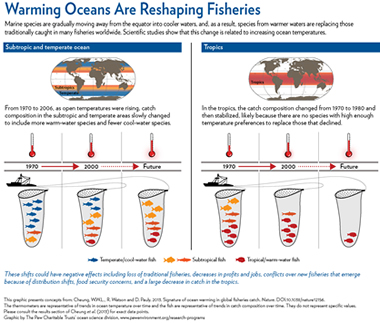 UBC researchers' "fish thermometer" shows warming oceans' effect on global fisheries. (Graphic by The Pew Charitable Trusts' ocean science division)
UBC researchers' "fish thermometer" shows warming oceans' effect on global fisheries. (Graphic by The Pew Charitable Trusts' ocean science division)
Climate change has been impacting global fisheries for the past four decades by driving species towards cooler, deeper waters, according to University of British Columbia scientists.
In a Nature study published this week, UBC researchers used temperature preferences of fish and other marine species as a sort of “thermometer” to assess effects of climate change on the world’s oceans between 1970 and 2006.
They found that global fisheries catches were increasingly dominated by warm-water species as a result of fish migrating towards the poles in response to rising ocean temperatures.
“One way for marine animals to respond to ocean warming is by moving to cooler regions,” says the study’s lead author William Cheung, an assistant professor at UBC’s Fisheries Centre. “As a result, places like New England on the northeast coast of the U.S. saw new species typically found in warmer waters, closer to the tropics.
“Meanwhile in the tropics, climate change meant fewer marine species and reduced catches, with serious implications for food security.”
“We’ve been talking about climate change as if it’s something that’s going to happen in the distant future - our study shows that it has been affecting our fisheries and oceans for decades,” says Daniel Pauly, principal investigator with UBC’s Sea Around Us Project and the study’s co-author. “These global changes have implications for everyone in every part of the planet.”
Source: UBC Media Release | 15 May 2013
- Details
- Category: 2013
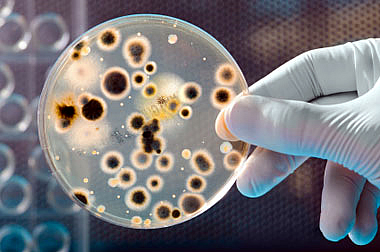
Philippine experts will be counting on an unlikely ally to help clean up the country’s polluted water systems - bacteria.
A research being conducted by the University of the Philippines in Los Baños (UPLB) and funded by the Department of Science and Technology (DoST) is looking at certain types of bacteria to help improve wastewater quality.
A team headed by Prof. Arlene Llamado from the Institute of Biological Sciences, College of Agriculture at UPLB assessed the bacteria’s potential in wastewater treatment applications.
Llamado’s team isolated five bacteria cultures taken from the soil of an abandoned mine site in Mogpog, Marinduque, Central Philippines, to determine if these can form biofilms. A biofilm is the slimy substance similar to slime on un-brushed teeth or the film on top of leftover soup. They are secreted by certain types of bacteria. In hospital settings, biofilm-forming bacteria are notorious for infections because they are resistant to antibiotics and cleaning agents.
While biofilms are by themselves unclean and make living things prone to infections, their potential as agents for eliminating other hazardous materials lie in their ability to attract positively charged metal ions such as those found in effluent wastewater. These can also be found in abandoned or contaminated mining sites.
The researchers wanted to leverage the ability of microorganisms to form biofilms as they are negatively charged and can, therefore, attach to positively-charged metal ions.
“By the simple idea of negatively charged polymers attaching to positively charged ions, we actually have a potential to remove heavy metal ions from waste water,” Lllamado said.
Cleaning oil spills
It is known that such bacteria can be used to remove oil spills. Lllamado added that they had collected samples from abandoned mining sites where there is a low concentration of organic elements and high concentration of copper because they expected that bacteria living in these soils would be resistant to heavy metals.
“All of the bacteria samples isolated from the site exhibited ability to produce biofilms. Further evaluation showed that all of these isolates were capable of removing heavy metals in water-copper solution. The planktonic cells of each bacterial isolate ate up the copper within six hours of contact time,” she said.
According to Llamado, further studies are under way to test the ability of these bacterial isolates in removing metals in wastewater.
If the tests deliver results, there is a strong chance that bacteria could be used not only to clean up abandoned mine sites but also contaminated river systems and tributaries.
Published in: UPLB in the News| 31 May 2013
- Details
- Category: 2013
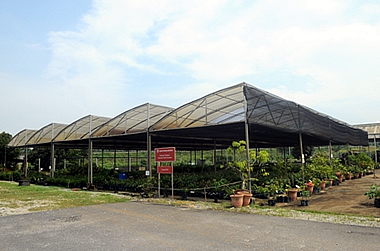
Many ordinary folks still think of the Taman Pertanian Universiti (TPU or University Agriculture Park) as the 426 hectares of sprawling land that has been devoted to agriculture and animal husbandry for education, research, and training purposes for more than half a century. But to the many UPM agricultural graduates who have sharpened their skills at the “farm,” it is the test bed of Malaysian agriculture where many of today’s nation builders have honed their skills and knowledge in agriculture, such as in developing the very successful rubber and palm oil industry of Malaysia and in guiding the paddy farmers of Kedah and Perlis to undertake double cropping in the 1960s, thus improving the lives of the farmers.
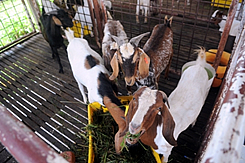 “The farm has had its good and bad days, its ups and downs,” said Prof Dr Abdul Shukor Juraimi, Dean of the Faculty of Agriculture, as he outlined the new role of the TPU in the coming days.
“The farm has had its good and bad days, its ups and downs,” said Prof Dr Abdul Shukor Juraimi, Dean of the Faculty of Agriculture, as he outlined the new role of the TPU in the coming days.
In the past, the farm was abundant with coffee, tea, and cocoa, aside from rubber and palm oil. Its fruit orchards where durian and rambutan fruits were propagated made UPM well-known among the folks in the Klang Valley.
However, when the government changed its economic focus from agriculture to industry, the farm which was a cost centre was relegated to a minor role.
“But with the new Vice Chancellor, Prof Datuk Dr Mohd Fauzi Ramlan, we are given the task of transforming the farm to make it profitable and sustainable,” said Dr Shukor, adding that agriculture is still UPM’s niche and core business.
“We have to look into how we can generate better returns so that the students can immerse themselves and learn farm management, ROI (returns on investment) and what it takes, for example, to maintain a hectare of palm oil plantation. We know we may not be as competitive as the private sector but the UPM farm should be able to run on its own steam and continue to be a test bed for Malaysian agriculture,” he said.
Dr. Shukor was also quick to add that the transformation would not be an easy task and is likely to take some years to achieve. For instance, 20 years ago when UPM experts started working on cantaloupes, the first local cultivars developed were bland. Now, the home-grown variety has attained sweetness of 12 or 13 brix (a measurement of sugar in the fruit), similar to the imported ones.
Another feather in the farm’s cap is the saTiri turf grass, now used in Templer’s Park, Damai Golf Club, and UPM golf course, Bayu lawn bowl in Klang, and the Sepang lawn bowl, among others. Dubbed as the super dwarf grass, its darker green color lends a more luxurious look to golf courses, not to mention its tolerance to water stress and shade.
A cross-breed between the Malayan fowl or ayam kampung with their wild cousins (ayam hutan or jungle fowl), was also developed at the farm. The new breed called akar putra is bigger and grows faster.
It was also in the farm that UPM scientists were able to successfully propagate orchids through tissue culture. The method, which had trickled down to private orchid farms today, ensures that the orchid flowers are the same as that of the mother plant.
Nowadays, a drive around the farm with its valleys, streams, ponds, and lakes is a refreshing experience and takes about 20 minutes by car from Kuala Lumpur.
As a service sector, TPU’s role is to provide UPM’s institutes and faculties their raw material requirements. Hj Abdul Ghani Hashim, Divisional Head of TPU, said that the farm has been serving 13 institutes and faculties, which have a combined total of 26 courses. With an average of 80 students per course, there have been around 2,080 students who would make use of the farm as a test bed for their studies and research work.
The facilities in the farm could be used for research depending on their areas of studies. For example, there are machineries that can plough fields - 76 hectares for nursery, horticulture, and floriculture for those keen on flowers and decorative plants; 54 hectares of palm oil; 3.5 hectares for covered sheds for poultry farming; and 100 hectares for vegetable, goat, deer, horse, or equine farming.
While the main functions of the farm are for teaching and research, Prof. Dr Abd. Wahid Haron, Director of TPU, has been thinking of income-generating activities, especially from the farm’s fruits and vegetables. Rare fruits and herbs, like the Brazilian nuts, nutmeg, and the “mahkota dewa”, a small tree with fruits said to be a potent cure for high-blood pressure and cholesterol, abound in the farm.
At present, TPU sells their farm produce at a sales office within the campus and people in-the-know would buy fresh fruits, vegetables, fish, and meat like chickens and quails, as well as compost and saplings of fruit trees.
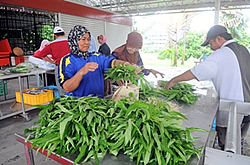 The TPU vegetable farm is accredited by the Agriculture Department for demonstrating best farming practices.
The TPU vegetable farm is accredited by the Agriculture Department for demonstrating best farming practices.
“We also send our excess produce to our Food Science and Technology Faculty to market or for use in their L’apprenti Restaurant as food ingredients,” Dr. Wahid said.
Dr. Wahid said that TPU is looking forward to supporting the Faculty of Agriculture in their urban agriculture campaign in the coming months.
Source: UPM News| 24 April 2013
- Details
- Category: 2013

Universiti Putra Malaysia (UPM) bestowed the “Putra Special Academic Award,” to two of its former Vice-Chancellors, in recognition of their outstanding contributions to the development and advancement of the university and the nation.
The two former Vice-Chancellors, Prof. Dato’ Ir. Dr. Radin Umar Radin Sohadi and Prof. Tan Sri Datuk Dr. Nik Mustapha R. Abdullah, received the award from the Sultan of Selangor and UPM Chancellor, Sultan Sharafuddin Idris Shah.
The recognition was given during the award ceremony called “Majlis Gemilang Academia Putra - MGAP,” which also conferred the Vice-Chancellor’s Fellowships Award 2012 to 13 academic and 2 non-academic staff of the university, while another academician received the Outstanding Consultant Award.
“This is in line with the mission of the university to give meaningful contributions towards the creation of wealth and development of the nation and people through the exploration and dissemination of knowledge,” said Prof Datuk Dr Mohd Fauzi bin Haji Ramlan, UPM Vice-Chancellor.
“These efforts will also boost UPM’s excellence and create a positive image at the global stage towards making us a university of international repute,” he added.
Source: UPM News| 9 May 2013
- Details
- Category: 2013
High population growth has caused increase in demand of agricultural products. However, due to climate change, there has been a decline in agricultural production, which has been threatening national food security.
Melon (Cucumis melo L.) from the Cucurbitaceae family is considered one of Indonesia’s most important agricultural products. At the Universitas Gadjah Mada (UGM), a melon variety has been developed to withstand extreme weather conditions, among other features. The Melodi Gama 3 (MG 3) was developed by a team of researchers from UGM’s Faculty of Biology. The research is funded by the Indonesian Directorate General of Higher Education through the Masterplan of Acceleration and Extension of Indonesian Economic Development (MP3EI).
In his report, Dr. Budi S. Daryono, head of the research team reported that the harvest at the Agricultural Research and Development Station (KP4) showed that the cultivar can yield up to 40 tons per hectare even under extreme weather conditions.
Aside from being climate resilient, MG 3 is resistant to powdery mildew that often attacks melons. It is also tolerant to diseases caused by virus, including Kyuri green mottle mosaic virus (KGMMV). With these, farmers can save on insecticides and fungicides.
MG 3 also has its nutritional benefits; it contains beta carotene, is sweet and aromatic, and can be stored longer.
Source: UGM News Release|29 May 2013
 UBC researchers' "fish thermometer" shows warming oceans' effect on global fisheries. (Graphic by The Pew Charitable Trusts' ocean science division)
UBC researchers' "fish thermometer" shows warming oceans' effect on global fisheries. (Graphic by The Pew Charitable Trusts' ocean science division)


 “The farm has had its good and bad days, its ups and downs,” said Prof Dr Abdul Shukor Juraimi, Dean of the Faculty of Agriculture, as he outlined the new role of the TPU in the coming days.
“The farm has had its good and bad days, its ups and downs,” said Prof Dr Abdul Shukor Juraimi, Dean of the Faculty of Agriculture, as he outlined the new role of the TPU in the coming days. The TPU vegetable farm is accredited by the Agriculture Department for demonstrating best farming practices.
The TPU vegetable farm is accredited by the Agriculture Department for demonstrating best farming practices. 














